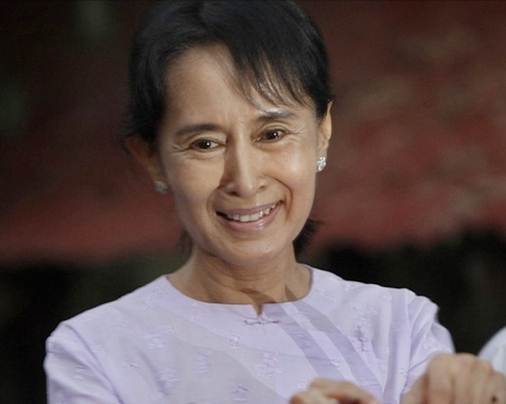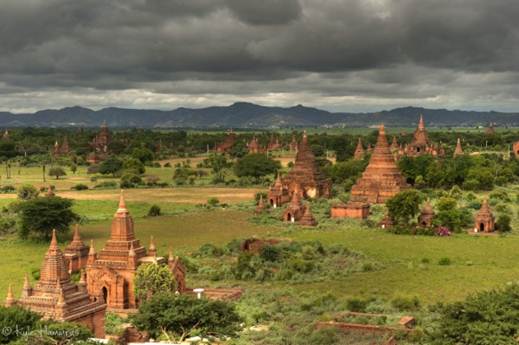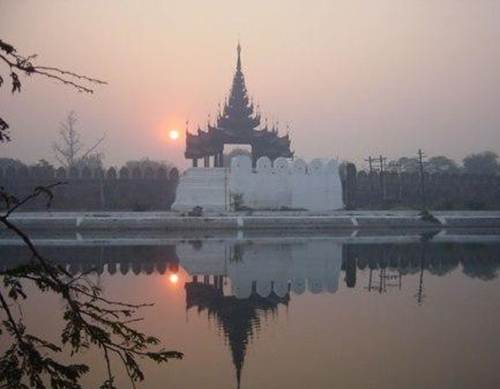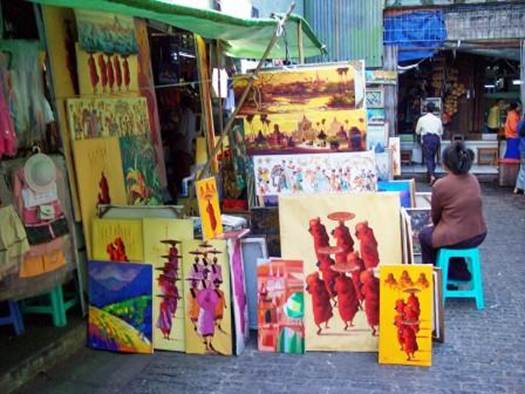As a result, I subsequently returned
several times, to write a book, to report, to visit friends, and my experiences
were of a Heart of Darkness land, fascinating, picturesque and heart-rending in
equal measure. Life was laden with a profound sense of unease. There was an
incipient look of fear behind people’s eyes. The last time I had been to Burma,
I spent my final evening with an old family friend who, shortly after I left,
was arrested for owning a fax machine. It was a pretext; he was also involved
in political matters. He was elderly and frail. He died in custody about a
month later. That was in 1996, which was declared the “Year of Tourism” by the
military government. They had orchestrated a swathe of hotel building and road
construction – often using forced labour. During that visit I interviewed Aung
San Suu Kyi, who was enjoying a period of freedom at the time. I subsequently
wrote a report in the Independent on Sunday about her request for tourists not
to come to Burma. The income from their visits would simply line the pockets of
the junta, she said. And, along with many people in Britain respecting those
wishes, I then stayed away.

Aung
San Suu Kyi, who was enjoying a period of freedom at the time
In November 2010 Aung San Suu Kyi was
released after a long stint under house arrest. On the eve of her liberation,
her party, the NLD (National League for Democracy), reviewed its stance on
tourism. It would, its officials said, now be happy for responsible,
independent tourists to visit. Just over a year later, in the hazy promise of a
new dawn, I returned to Burma.
I arrived to find a country full of hope and welcome. It was a surprise to see how much tourism
had developed since my 1996 trip: British visitors may not have been making big
inroads, but a ready market had been growing among Asian nations and some
European countries too, particularly Italy. Granted, there are no big, global
hotel chains – yet. But in the main tourist destinations there’s an array of
fairly decent accommodation, and air travel to these districts is easy.
Although the capital was moved inland in 2005, Rangoon remains the commercial
hub and principal gateway. From that starting point I had planned a trip that
would initially take me off the main tourist radar to an area in the east newly
opening up to visitors. After that, my route would proceed to what have become
the classic sights of Burma, around Inle Lake and the old royal capitals of
Mandalay and Bagan. I was accompanied by my sister and guide: not, as in former
times, a spook but a genuinely knowledgeable archaeologist. Even though he
spoke English well, it took me a day or so to tune into the intrinsically
Burmese peculiarities of his outlook: ‘the olden days’, for example, was a
frequent allusion which referred at times to the particularly grim period of
General Ne Win’s dictatorship from 1962 to 1988, at others to the magnificent
era of the 11th- and 12th-century kings.

the
particularly grim period of General Ne Win’s dictatorship from 1962 to 1988, at
others to the magnificent era of the 11th- and 12th-century kings.

the
old royal capitals of Mandalay and Bagan
We spent a day re-exploring Rangoon,
visiting the sublime Shwedagon Pagoda – its 99- metre main golden stupa
presiding over the city – and the colonial downtown area where tenacious
vegetation cocks a snook at the grandeur of the Victorian-era buildings. Then
we set off up country, bobbing over Burma’s central plains on the first of many
such scheduled flights in a propeller plane, to the hilly Shan State and the appealingly
named little airport of Heho. Our first destination was the town of Kalaw,
beautifully set among cool hills clad in fuzzy pines, about two hours’ drive
from there. Once a British hill station, it still has an avenue lined with
mock-Tudor country houses; squint and you might think, at a pinch, that you
were in Surrey. The town’s many pagodas and the large military presence (this
is where the top brass are trained, I was told) pull you smartly back into
Burma. As does the vibrant market, we wandered through an expansive area with
stalls manned by colourful tribal traders from the Shan, Pa-O and Palaung
minorities.

Myanmar
has a tradition of crafting beautiful things. Take a picture of the crafter
making what you purchase